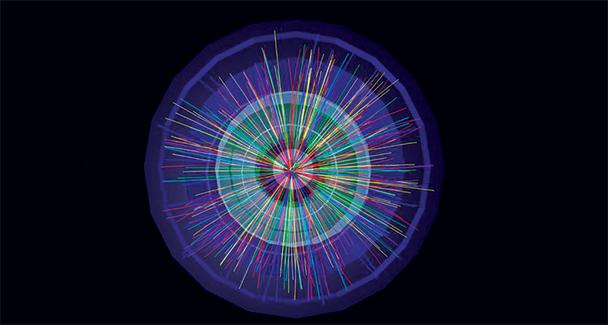Brooke Hagg, a physics professor at American River College and UC Davis, gave a lecture on April 8 on her research studying the effects of reproducing ion collisions.
“Grab a cookie and grab a clicker, there will be a quiz,” Haag said, opening the lecture.
There were interactive quiz questions given throughout her lecture and Haag encouraged the audience to discuss their answers with each other as she outlined her research.
Haag discussed how the team she works with at UC Davis works to create heavy ion collisions in a small space of long metal tubing.
These collisions create so much energy that the team is able to recreate a condition of the universe named Quark Gluon Plasma, or QGP.
Quarks are elementary particles found in matter.
There are six different types of quarks, referred to by scientists as flavors.
Quarks also make up mesons, which are hadronic subatomic particles.
When these particles are pushed together in small places like in accelerators, collisions result that recreate those from the Big Bang, 13.7 billion years ago.
Also explained was the STAR (Solenoidal Tracker at RHIC) experiment which is conducted at the United State’s heavy ion collider in Brookhaven.
The main objective of the STAR experiment is to study the characteristics of QCP. By studying QCP, scientists can better understand the condition of the universe after the Big Bang.
“If they can recreate how (the Universe) was affected after the Big Bang, who knows what else they can recreate,” said Katelyn Lesch, a physics major. “It’s cool because I feel like it is just the beginning of analyzing just some of the matter that’s out there.”
The STAR experiment involves running these heavy ions at through beams that are three stories high, then analyzing the collisions that result. Fixed target collisions, or beam pipe collisions provide the data, or “mini Big Bang” that is monitored at the Brookhaven site.
Haag explained that her team is interested in studying where along the pipe the collision occurred. If the collision occurred towards the edge of beam pipes, that’s the information that Haag wants to use.
She stressed the need for Congress to continue funding projects like the STAR experiment for future students to study.
“I know it seems obscure, but you really can apply some of these things to your own life,” Haag said. “Observing the process of things and drawing conclusions about them lets us see things in a different light.”














